Royal Yugoslavian Air Force crews
The Yugoslav Detachment of the 376th Bombardment Group stationed in Italy, was formed from a group of Royal Yugoslav Air Force personnel in exile. After the capitulation of Yugoslavia in 1941 these men risked their lives and instead of surrendering to the Germans, decided to leave their occupied country, hoping to find another opportunity to fight Hitler's forces. The pilots made their decisions based in part on the type of the aircraft they flew and their location when the call to surrender reached them. The aircraft they were trained to fly were British made Blenheims; Italian-made tri-motor bombers, (Savoia-Marchetti); and US-made Lockheed Model l0s, used in commercial aviation. The latter type were used to evacuate the King and the members of the Royal Government to Cairo, Egypt. Four other aircraft fully loaded (SavoiaMarchettis) managed to reach the Soviet Union. They landed separately at different points in Ukraine and near the Black Sea. Surprised by this escape the Russians brought the crews to Moscow where they spent four months waiting to be allowed to join the Yugoslavian military forces in exile. In August 1941, because of the intervention of the British Ambassador to the Soviet Union, Sir Stafford Cripps, this group of twenty-three men left the Soviet Union. It took seven long days to reach the Turkish border at Leninakan.
By this time, there were about 300 Yugoslav Air Force personnel in exile living all over the Middle East. Most of the pilots began flying for the British Royal Air Force.
In the summer of 1942, King Peter II of Yugoslavia came to the United States to seek military and humanitarian aid for his occupied country. He was very warmly received in Washington D.C. and was invited for dinner at the White House. President Roosevelt promised to give four B-24s to the exiled Yugoslav Government to help the resistance fighters in Yugoslavia.
In Egypt in September 1942, twenty six Royal Yugoslav officers and fourteen enlisted men were selected to go to the United States for training. They were active duty and reserve military pilots, navigators, communications personnel, and mechanics.
This Group assembled in Miami Beach for English lessons in November, then went to gunnery school at Ft. Myers in December and in February of '43 left Ft. Myers for various training schools. By June they assembled again at Salinas AAF Base in California and then on to Blythe AAF Base in August '43 where they finished training and received their U.S. Air Force Wings.
After an Allied conference in Quebec, the Pentagon decided that this special Detachment should return to the Middle East as a Yugoslavian unit operating with the American Air Forces.
President Roosevelt kept his promise. At a ceremony held at Bolling Field, Washington D.C., on October 6, 1943, President Roosevelt presented four new B-24Js to the assembled Yugoslav flyers.
In his speech President Roosevelt said: " ... let these aircraft fulfill their mission under your guidance. They were made for two purposes: one to bomb our common enemy, second to make available to your countrymen necessary material for which they were waiting too long: food, medical supplies, weapons and ammunition. I am sure that you will be successful in this assignment which you have accepted. Do not forget that we shall always be comrades in arms."
The following day the four B-24s and their crews left the U.S. However, these aircraft and their crews were not destined to totally fulfill their mission outlined by President Roosevelt. The world political atmosphere in the fall of 1943 was greatly different from what it was in 1942: Yugoslavia was in a state of political and military upheaval. The Royal Yugoslav government in exile agreed that the four B-24s and their crews should join the Allied forces in Africa. On November 8, 1943, the Yugoslav flying personnel were attached to the 376th Bombardment Group, stationed in Enfidaville, Tunisia. After a week of training the Yugoslavs flew their first combat mission on November 15 to strike the Eleusis Airport, Athens. Then on November 24, in their first combat mission from San Pancrazio a Yugoslav crew was shot down by enemy fighters en route to bomb a target at Sofia, Bulgaria. The crew bailed out of the burning B-24, over the part of Yugoslavia occupied by Bulgaria. Within two days they were all caught, mostly by German soldiers and later turned over to Bulgarians. It took several weeks before they were taken to the POW camp at Schumen, Bulgaria, where they met the US survivors of the first raid on Ploesti.crew of B-24 (42-73137 #22) shot down November 24, 1943 over Sofia, Bulgaria:
Stanisavljevich, Dragisha M. Y-43 Pilot
Yelich, Millosh M. Y-49 Co-pilot
Milloykovich, Zhivko T. Y-56 Navigator
Vecherina, Dinko N. Y-33 Bombardier
Timothiyevich, Miodrag M. Y-276 Engineer
Halapa, Ivan M. Y-164 Radio
Benderach, Vaso B. Y-229 Gunner
Lakich, Ognyan I. Y-541 Gunner
Korosha, Ivan V. Y-314 Gunner
One American was on board the plane
Cale, George 15078123 Gunner
crew of B-24 (42-73089 #21) shot down December 19, 1943 over Augsburg, Germany:
Milloyevich, Dooshan Z. Y-22 Pilot
Mucich, Doosan M. Y-32 Pilot / Co-pilot
Stefanovich, Borislav V. Y-79 Bombardier
?? pilot Dragoljub Jeremic
Intihar, Franyo F. Y-207 Engineer
Tseray, Eduard S. Y-319 Radio Operator
Lazarevich, Doosan S. Y-230 Gunner
Ishich, Patar A. Y-283 Gunner
Vidoykovich, Momchillo V. Y-53 Gunner
Ognyenovich, Yovan E. Y-231 Gunner
One American was on board the plane
Vause, Jr., Levie E. 393694 Navigator
bombardier-gunner Bogdan M. Madjarevic killed 24/5/44, while bombing a/c factory in Wiener Neustadt,Austria. He was only one killed aboard B-24. He is buried at Military cem. in Bari,Italy.
crew of B-24 (42-73085 #20) shot down on August 22, 1944 on mission to Lobau, Austria:
Radosavlyevich, Blagoye N. Y-42 Pilot
Voolich, Borivoje G. Y-34 Co-pilot
Pavlovich, Slobodan M. Y-61 Navigator
Tsrvenkovich, Obrad D. Y-95 Bombardier
Šijaković V.( Vuko) Y-325 Engineer
Zhivanovich, Toma M. Y-323 Radio
Parapatich, Boris K. Y-162 Arm
Stoykovich, Voyin P. Y-148 Gunner
Bobek, Milutin A. Y-772 Nose Turret
Trampush, Emil A. Y-668 Waist Gunner
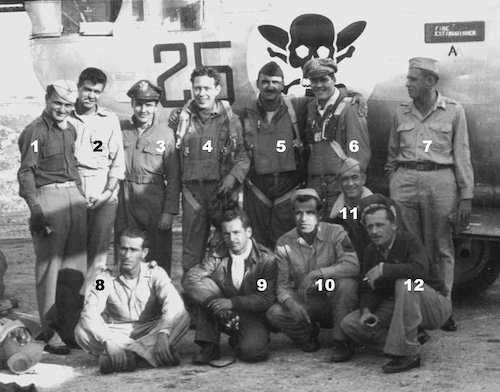
1) 1st Lt. Vladislav G. Radovich- navigator, 2) unknown, 3) unknown, 4) unknown, 5) Capt. Voyislav N. Skakich- pilot, 6) Major John T. Snyder, 7) unknown, 8) 2nd Lt. Deyan D. Radich- engineer, 9) 2nd Lt. Aurel T. Trailov- gunner, 10) T/Sgt. Viktor A. Starc- gunner, 11) 1st Lt. Momchillo M. Markovich- bombardier, 12) 2nd Lt. Dragomir V. Vidanovich- radio operator
August 27, 1944- Lt. Colonel Richard Fellows, then commanding officer of the 376th Heavy Bomb Group (H) paid a tribute to the men of the Yugoslavian Air Force Detachment. The tribute, given by the colonel in the form of a commendation read as follows:
Headquarters- 376th Bomb Group (H) AAF
It is desired to commend the Royal Yugoslavian Air Force detachment, attached to the 512th squadron of the 376th Bomb Group (Heavy) and the 15th AF for outstanding performance of duty in action in strategic support of allied forces in the Mediterranean theater.
From November 1943 to August 1944- four (4) crews made up of forty (40) Officers and Enlisted men forming the Detachment flew regular and frequent combat missions attacking vital enemy installations; exhibiting the greatest bravery, stamina and skill completing eighty eight (88) successful missions. During this period the Detachment lost three (3) of their B-24 aircraft, and sacrificed three of their four crews, all lost over enemy targets. The Royal Yugoslavian Air Force Detachments by its actions has constantly given its utmost in devotion to duty for the allied cause, and will always be worthy of emulation.
R.W Fellows, Lt. Col.
Air Corps, Commanding
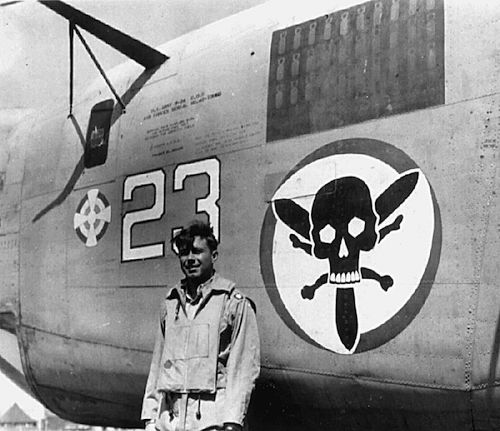
42-73065, RCL #23, the sole surviving B-24 of the Royal Yugoslav Air Force crews. Note the RYAF marking in front of the "23."
Crew men who survived the missions
Arzenshek, Stanislav J. Y-690 Waist
Lubarda, Alexandar S. Y-519 Waist
Marinovich, Millosh M. Y-102 Gunner
Markovich, Momchillo M. Y-77 Bombardier
Miklush, Franc A. Y-474 Waist
Millovanovich, Sava J. Y-75 Co-pilot
Mitich, Milan M. Y-180 Copilot
Payich, Nedelyko J. Y-80 Gunner
Peshich, Yovan S. Y-195 Gunner
Poye, Dragutin C. Y-165 Engineer
Radich, Deyan Y-123 Engineer
Radovich, Vladislav G. Y-83 Navigator
Sabados, Kiril S. Y-22 Navigator
Skakich, Voyislav N. Y-44 Pilot
Starc, Viktor A. Y-477 Nose
Stoykovich, Voyin P. Y-148 Gunner
Trailov, Aurel T. Y-104 Bombardier
Vidanovich, Dragomir V. Y-170 Radio
Yovanovich, Bogdan U. Y-78 Gunner
books about the Yugo Detachment
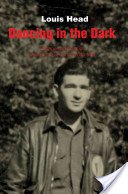
One of the Liberator Yugoslav detachment fell after a collision with another Liberator near Knin. From the local crew survived and managed to get over the partisan salobodnu out on the territory of one member of the crew ...
This is a book about the rescue of the crew and draw from other Liberator.
The true story of an American Air Force copilot's efforts to escape and evade the enemy after he is forced to jump from his plane above Yugoslavia and make it back to base in Italy.
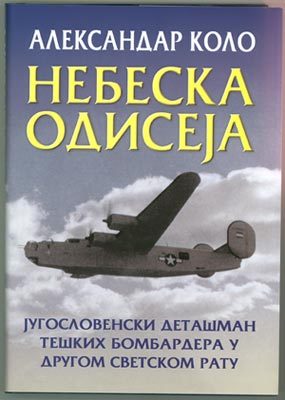
This book is primarily from the tendency for the victims of these airmen saved from oblivion, and in order to shed light on a little-known and deeply repressed episode of Yugoslav history of the Second World War.
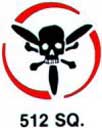
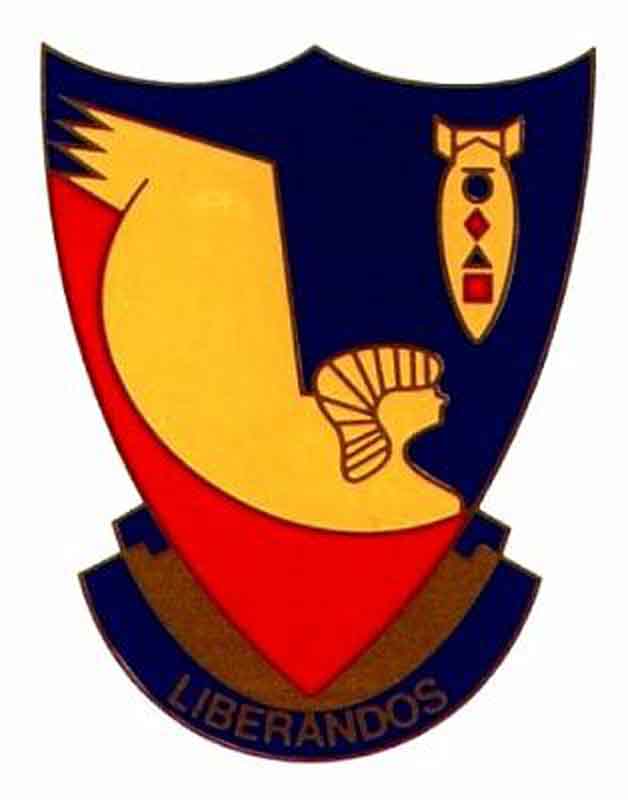
The website 376bg.org is NOT our site nor is it our endowment fund.
At the 2017 reunion, the board approved the donation of our archives to the Briscoe Center for American History, located on the University of Texas - Austin campus.
Also, the board approved a $5,000 donation to add to Ed Clendenin's $20,000 donation in the memory of his father. Together, these funds begin an endowment for the preservation of the 376 archives.
Donate directly to the 376 Endowment
To read about other endowment donation options, click here.
Reunion
NOTE change in month !!!
DATES: Sep 25-28, 2025
CITY:Rapid City, SD
HOTEL: Best Western Ramkota Conference Hotel; 2111 North LaCrosse St., Rapid City, SD 57702; 605-343-8500
Click here to read about the reunion details.



















